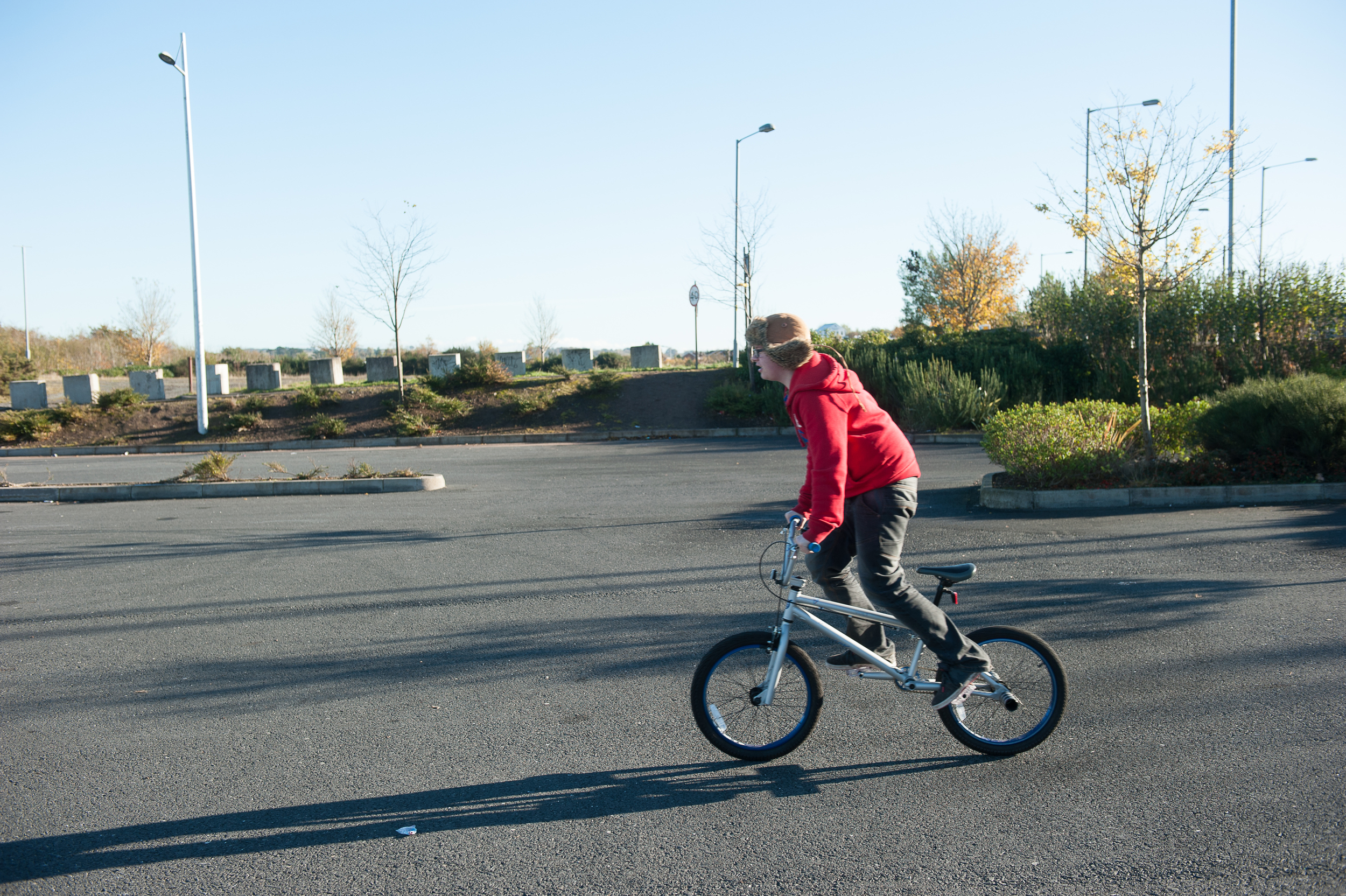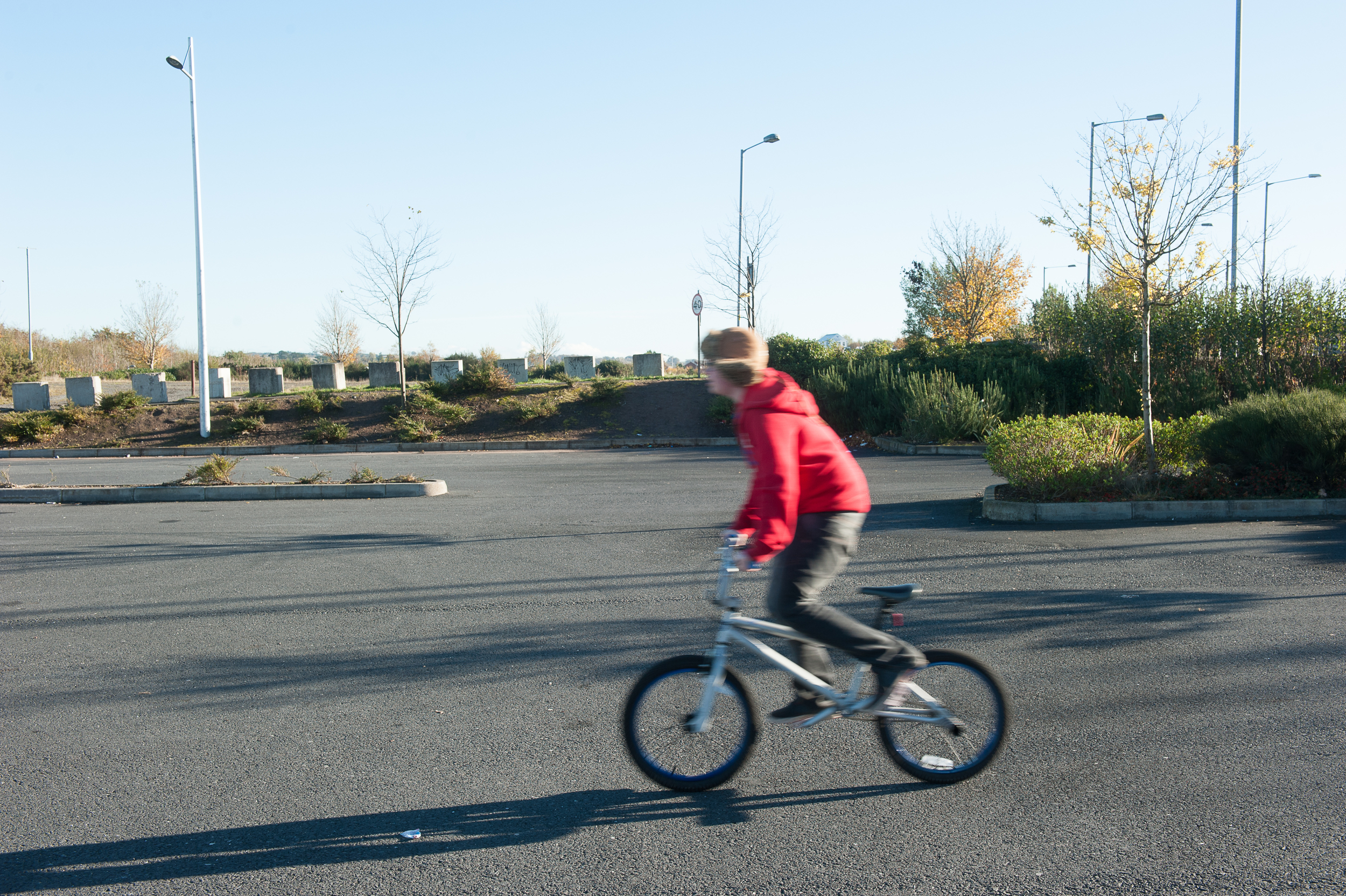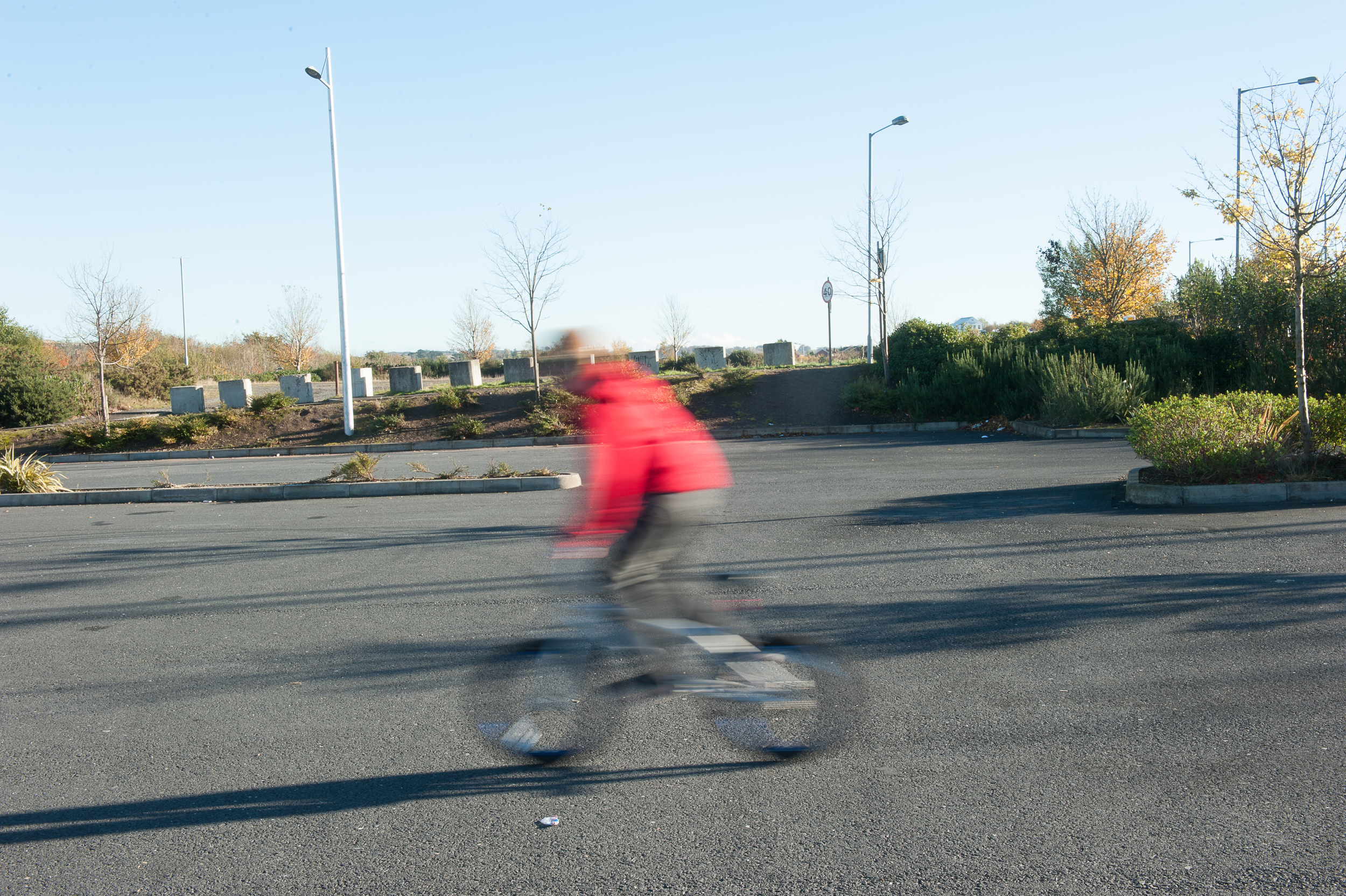The idea of this exercise was to demonstrate how motion blurs through the use of a fixed camera, moving subject, and ever increasing shutter speeds. The subject I decided to use was my son on his BMX bicycle. This was one way of getting him out from in front of his Xbox as well as helping me complete some of the syllabus. I set the camera to shutter priority to ensure a fairly consistent exposure through the series of photographs below. Although I took a series of 15 exposures I am only including 4 images on the blog to show the effect of increasing the shutter speed.
In the photograph above the subject is in effect frozen in time, there are no discernible indications of movement. This is due to the very high shutter speed. The shutter mechanism, in this case, only lets light hit the sensor for 1/3200 of a sec (0.0003125 seconds). To facilitate enough light hitting the sensor to make a well exposed photograph, the camera has adjusted the aperture to f2.8 (i.e. wide open for the lens I was using). It was by setting up several cameras in a row with a fast shutter speed that Eadweard Muybridge was able to prove for the first time that all four horse’s feet come off the ground when it gallops
In the second image, the subject again appears to be frozen, but if you look at the spokes of the wheel (you may need to click on the photograph above and view the full-size image) you will see the spokes are starting to blur towards the outer edge of the wheel. This is starting to give the fact of movement but because the spokes are the only thing fast enough to be blurred at this point the effect is minimal.
In the third photograph the cyclist is starting to blur. In my opinion the effect is quite unpleasant and discordant with the rest of the photograph. In many cases for the most part as photographers we are striving for that pin sharp image so when we come across something like this it tends to be discarded.
It is not always the case that this level of blurring is unpleasant to examples of this being used to great effect are two iconic photographs by Henri Cartier Bresson. They are the man jumping across the puddle and the bicycle shot from the staircase. I think that in both of these photographs there is enough sharp interesting detail to show that the blur is intentionally there to emphasise the movement of the jumper and the cyclist, whereas in my photograph the only thing of interest is the cyclist so the blur is somewhat jarring to look at.
It is also worth noting here that the camera has reduced the aperture to an f-stop of F10 to counteract the effect of the slower shutter speed on the exposure.
In the fourth and final image, the subject is not only blurred but also distorted we can see the wheels are no longer circular, and the cyclist is almost smearing his way from right to left across the photograph.
In the fourth and final image, the subject is not only blurred but also distorted we can see the wheels are no longer circular, and the cyclist is almost smearing his way from right to left across the photograph, similar to the photograph of a racing car by Jacques Henri Lartigue. This is my favourite photograph of the sequence because although the subject is not in focus it is clear to the viewer that it is a picture of a cyclist moving quickly from right to left.
So what could have done better? As any estate agent will tell you “location location location” perhaps by giving the photograph a better background than an commercial car park it may have been a more interesting final product but the sequence of photographs meets the brief of the exercise.



